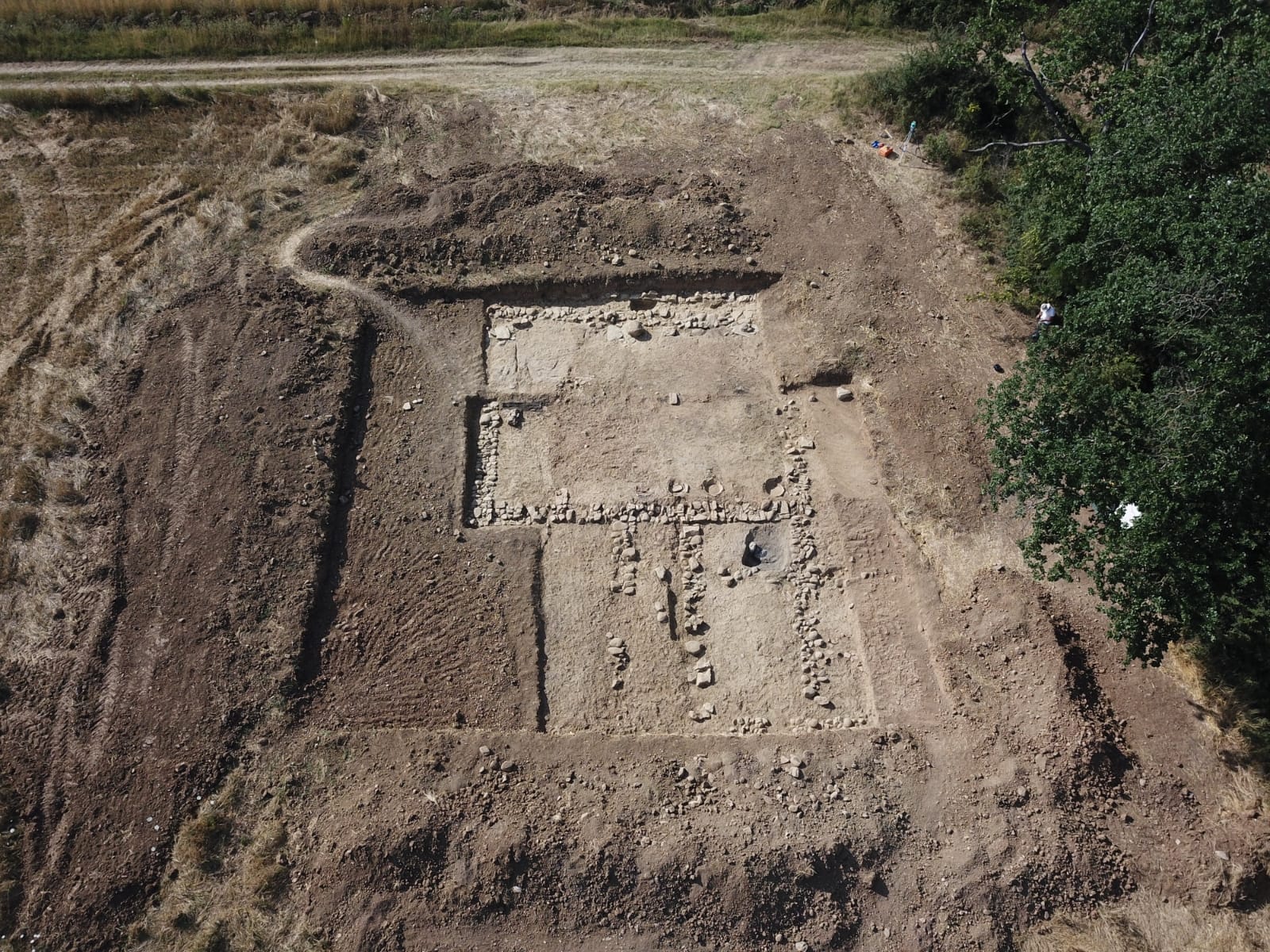The Monteverdi archeology field school takes place just outside of Grosseto, Tuscany, Italy. During the duration of the field school, the archaeologists and the students will stay at a beautiful Italian villa, which dates to the 1400s. For the students, it was just Constance and I for the first year, we had our own flat to ourselves and we each had our own separate rooms, which is very rare for field schools. The flat also came with a full kitchen and living room with a TV, if we were inclined to watch a movie after getting done for the day. The villa also had a swimming pool for us to use occasionally to go cool off. Each of the meals, except for breakfast, were prepared for us by one of the cooks provided by the owners of the Monteverdi Villa. The first night we arrived we had a beautiful dinner prepared for us by the family of the estate. That dinner was almost in a barbeque like setting, and both Constance and I were introduced to the entire family and to the rest of the excavation team. The final dinner was a repeat of the first, except we went full ‘American’ barbeque with the meats. These two dinners, with everyone staying at Monteverdi in attendance, created a beautiful start and ending to an epic completion of the field season.
The actual archaeology work was different than what I was used to previously. I have done some minor archaeology work in Montana, USA prior to working at Monteverdi. The main difference I found in this excavation was the hardened clay stratum, which required an abundance of pickaxe work. The site itself is located about ten-minutes from the villa in a field used for growing straw hay. In the afternoons, a wind normally picked up, which the team very much appreciated. Each new artifact or feature made the hard work worth it, overall, because another piece of the puzzle was given to connect the dots on what type of structure(s) we were uncovering. So far, the site has been dated to 2nd– 1st century B.C. Roman Republic based on the ceramics and coins found, and those dates may change as the future archaeologists start unearthing more of the puzzle.
The smallness of the team this year gave us the opportunity to truly bond over the course of this excavation. Additionally, both Constance and I could get one- on- one with the professors and (attempt) to truly learn their methods for excavation. Overall, all the people I met and worked with on the field school were warmhearted, friendly, understanding, and most importantly, had a great sense of humor. Some advice for next year’s students, bring a good water bottle and plenty of sunscreen. Most of the time work will be done under direct sunlight, which requires proper clothes, sunscreen, and most importantly, staying hydrated. Another important item to bring would be leather gloves that have already been broken in prior to the excavation.

